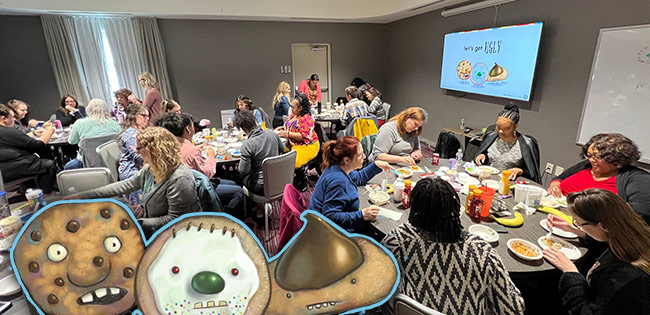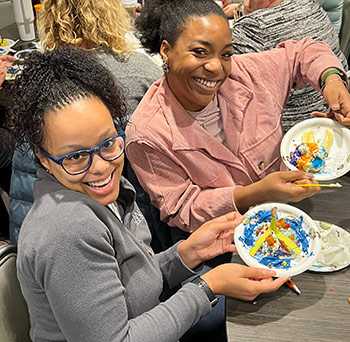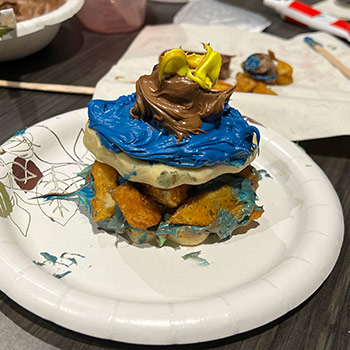
Everyone had a plain sugar cookie on a plate in front of them. Each table was stocked with white frosting, food coloring, and an array of cool sprinkles in various shapes and colors.
I gave them one instruction: Decorate your cookie as ugly as possible.
And just to make it clear, I added, “Your goal is to make Martha Stewart weep!”
This was during a presentation for a group in Ohio after I had shared my almost famous Ugly Cookie story. We had the luxury of time, and the meeting planners were up for doing one of my favorite group activities.

It’s funny how one simple objective – decorate your cookie as ugly as possible – can unleash the inner child in some people while paralyzing others. And it’s remarkable how many lessons can be learned in one, simple, seemingly frivolous activity.
After the sprinkles had settled and bowls of frosting the color of a full baby diaper were exhausted, we unpacked some great insights together.
Eventually, one woman showed off her finished cookie, which was not ugly in the least. She declared that she was going to make it pretty from the start. She labeled my direction a “#notarule,” a clever callback from an earlier point I made about rules we follow that don’t actually exist.
At that moment, perhaps flattered by her quoting me, I applauded her aplomb. (Not sure I’ve ever used that word before, but it fits. Let’s see if I can do it again before we’re done here.)
I used it as an opportunity to share a great way to determine if something we’re about to do is a rule that doesn’t exist. Simply ask, “Or else what?”
Most of us treat rules that don’t exist as brick walls. But the moment we ask where the so-called rule comes from or what’ll happen to us if we were to break it, its power crumbles. Generally speaking, It’s a “real” rule if the punishment for disobedience is death, jail time, or termination from our job. But if the only real answer you get after asking, “Or else what?” is the possibility of a little shame, embarrassment, or a risk of failure, congratulations! You’ve just unmasked a “#notarule.”

In the activity, most people followed my “rule” (decorate your cookie as ugly as possible), which implored them to break a different “rule” (that cookies are supposed to be decorated attractively).
This woman decided to break my rule, choosing instead to follow the original rule.
Clearly, I didn’t have any power to fire her. I could’ve tried to shame her, I suppose, for not following the instructions. But in the end, nothing terrible was going to befall her for making the cookie pretty instead. In fact, she got praised for it.
Later, I had a different thought. Noting that some people legitimately had a difficult time going against their programming that cookies should be decorated beautifully, I wondered if this woman had merely found a clever way to hide.
Perhaps the process was too uncomfortable for her, or she was afraid that her cookie wouldn’t be “ugly” enough, or she was worried she’d be judged for “doing it wrong.”
So maybe she just rationalized a reason why it was better to stay in her comfort zone. Maybe she missed a golden opportunity to acknowledge that this was a safe place to wander beyond it and learn something valuable in the process.
I don’t know. Only she knows the truth.
The truth can be uncomfortable, and we are very clever at finding ways to hide from it. We are rationalization machines, regularly making emotional decisions we later rationalize with reason. Emotional decisions that are often rooted in fear.
We are good at fooling others and sometimes we can even fool ourselves. However, life doesn’t get better and progress isn’t made unless we are brutally honest with ourselves.
Truth is undefeated.
We can use “or else what?” as a lie detector to help us identify rules that don’t exist.
But identifying a rule that doesn’t exist is not enough.
Real freedom comes when you stop hiding and summon the aplomb (YES!) to actually break it.